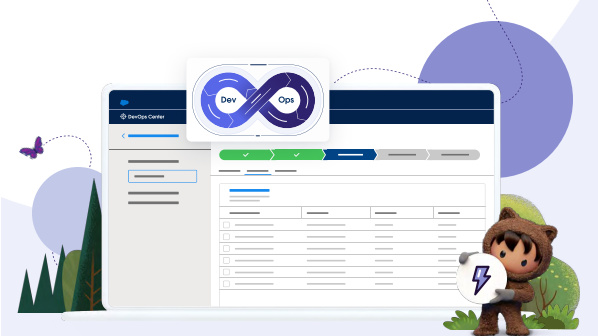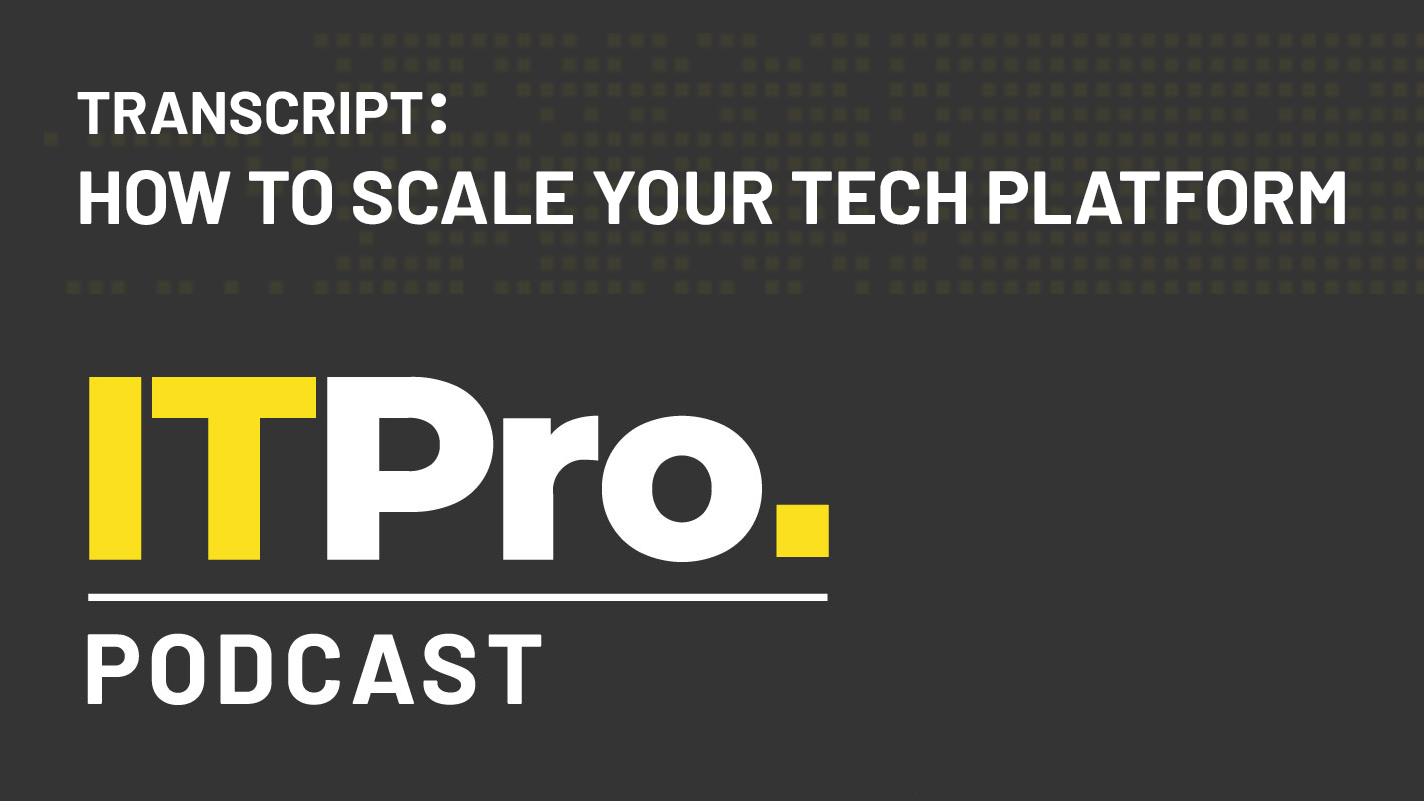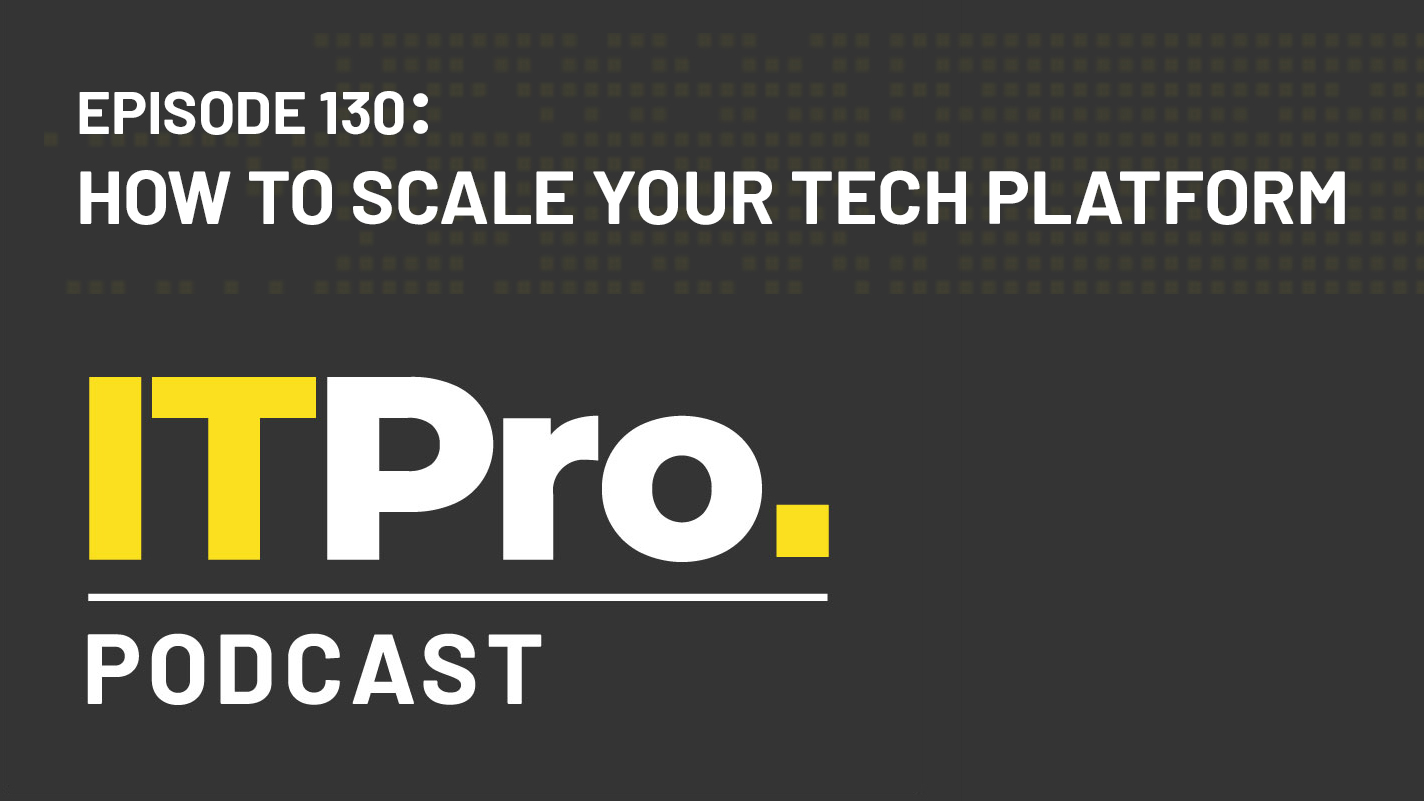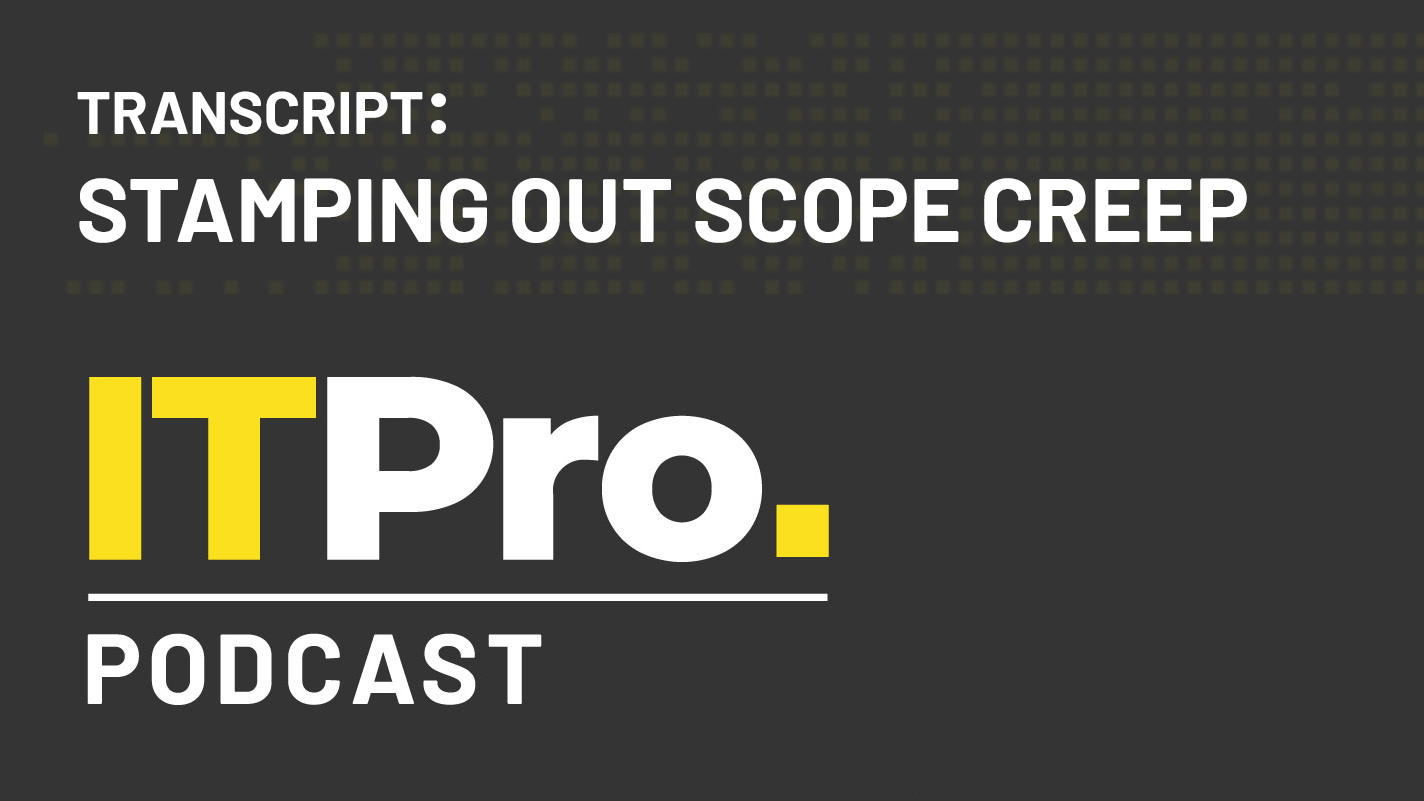IT Pro Panel: The CIO's guide to software
Build, buy or bodge - how do you create the perfect software stack?


It's hard to argue that software is the beating heart of any business; as vendors, consultants and analysts have all repeatedly told us, 'every company is now a software company'. Whether you're offering your own software to customers or simply delivering a service that's enabled internally by software, the reality is that every organisation is dependant on software.
The world of software is complex one though, with many different options. There are lots of choices to make, like whether to use proprietary software or open-source equivalents, or whether to use cloud-hosted Software-as-a-Service or traditional on-premise deployments. It's a complicated proposition, and the task of managing that complexity generally falls to the CIO.
One of the first things a CIO must grapple with is the age-old 'build versus buy' conundrum; should you build your own software in-house, or can you rely on off-the-shelf solutions from third-party vendors? In this month's IT Pro Panel Discussion, we spoke to our panel of expert IT leaders to find out how to build the optimum software stack.
If you want something done right...
As with every discussion about software deployments, the usual caveats are applicable: every business is different and there's no one-size-fits-all solution. All of our panellists stressed that determining what the right approach is depends on the specific details of the project. With that having been said, however, there were a few common attitudes that our panellists shared.
For example, almost all of our panellists agree that there's nothing quite like building your own software, especially if it's a critical function that's unique to your business. You're unlikely to find a pre-built solution that will be an exact match for your needs, and trying to retrofit an existing package to suit your unique challenges inevitably leads to headaches and failure.
"We use as much off the shelf software as we can," says Richmond Events IT Director Liam Quinn, "but the core software that is our USP is completely bespoke. We tried to integrate an off the shelf app to use our dataset and it broke it so badly, we ended up developing our own!"
GoCompare CTO Jackson Hull experienced similar frustrations, leading him to question if a third-party software solution can ever function as part of an organisation's core IP.
Sign up today and you will receive a free copy of our Future Focus 2025 report - the leading guidance on AI, cybersecurity and other IT challenges as per 700+ senior executives
"For example, I've previously attempted to mangle Jira into a bespoke workflow operations tool," he tells us. "Bad idea. The workflow was so specific to our unique business model that there was never a chance Jira could scale."
"Our problem is no-one understands the core business like we do," explains Quinn. "There are lots of event management systems out there, but they all miss the point in certain key areas."
Building a custom piece of software that perfectly fits your requirements is a lofty goal, and it's less attainable for some businesses than it is for others. For Celtic Manor Resort IT manager Chris Stanley, the realities of keeping the lights on make in-house development difficult.
"We use a lot of 'off-the-shelf' software," he says. "We're very interested in developing our own system but the development personnel and time isn't there. It's a hassle building our own system, and having to get all the business heads of departments together whilst still trying to run a rapidly-growing company isn't possible at the moment."
Having a purpose-built solution is an attractive prospect, Stanley explains, as licenses and subscriptions for third-party software contribute significantly to Celtic Manor's operational costs, but the cost of maintaining in-house development resource has forced the company to outsource its development work for now.
One-size-fits-none
However, while this can be an acceptable solution for some organisations, it adds an extra layer of cost and complexity to your IT organisation, and Hull remains skeptical about the ability of external developers to truly understand the minutiae of your business.
"I struggle with the idea of outsourcing development of systems that support the strategic opportunities of the business. In particular, if these are customer-facing systems, we'd be hard-pressed to believe a third-party could hit the mark."
Richmond Events has tried both in-house and outsourced software development., but Quinn is now using the DevOps model to expand the company's in-house development capabilities. "We're a small company, but the timeliness of in-house beats outsourced every time for us."
Asking the vendors themselves to adapt their software to your needs isn't an ideal solution either. As Quinn points out, even if they're able to adapt, they may not want to, and Hull notes that the rising popularity of SaaS delivery models is making it increasingly difficult to persuade vendors to customise their software.
There are other views, however, as illustrated by Oxfam International's global CIO Michael Duggan. Oxfam is made up of 19 different organisations operating in 86 countries, including over 1,200 retail stores - and Duggan has the somewhat unique challenge of making sure it's all supported by the right IT. Despite Oxfam's highly specialised requirements though, the company doesn't rely on home-built software for most of its estate.
"Our preference is to configure modern SaaS to the business need and, if necessary, adjust business processes to align with the software," Duggan explains; "a difficult conversation that requires a lot of business engagement. Customising is a last resort."
Of course, there are some challenges that are unique to the humanitarian sector, and in most of these cases, specialist software will have to be built. Oxfam partners with large companies like Microsoft and Salesforce to help construct these specialist tools, as well as working with other humanitarian organisations.
"An example is our Logistics platform Helios. Logistics in the humanitarian sector is completely different to logistics in the commercial sector - we operate in austere environments and post-conflict (or even conflict zones)," Duggan says. "In the case of Helios we partnered with other Humanitarian organizations to co-build and support."
The global scale of Oxfam's operation means that their software catalogue numbers in the thousands, presenting a huge challenge in terms of management and maintenance - a common issue for CIOs. Quinn, Hull and Stanley all agree that consolidation of their software estates is a major concern, and all are fighting a constant battle against software sprawl.
The battle of the bulge
"We've got a much smaller number than Chris," Quinn reveals, "mainly because our systems are all outsourced and hosted via a hybrid Citrix model. That said, we're always trying to consolidate the number of apps and suppliers wherever we can."
Hull, meanwhile, adds that the situation is similar at GoCompare. "Add to that the complexity of acquisitions and layering more systems on in a relatively unplanned fashion, and it becomes a real problem," he explains. "We utilize a suite of WAF tools internally which let us identify on an annual basis which systems are getting lots/no use to determine where to consolidate and prune our systems."
Without regular auditing and consolidation of their stack, CIOs run the risk of building up significant technical debt, which can cause major problems later down the line. In order to try and curb this, Duggan relies on something he calls the 'Technology Balance Sheet'.
"Every time you add a new capability, you have a corresponding increment in your technical debt," he explains. "It stops the organisation thinking only about the acquisition of new technology capabilities and emphasises that on top of depreciation you need to think about technology debt. This allows us to talk about containment strategies."
For the same reason, Hull stresses the importance of not undertaking dev work for its own sake. "If the process is not at the heart of the business, don't build for it," he says. "It sounds obvious - but few businesses would consider building an expense management solution, for example."
Duggan's strategy for minimising technical debt is to stick to SaaS packages wherever possible, and cloud-based software is a popular option across the board. Hull calls it "a no-brainer", while Quinn - whose firm has been using Citrix for its virtual desktops since 2002 - says he "will never go back".
Last year, Stanley told IT Pro that cloud wasn't reliable enough to justify a migration, but since then even Celtic Manor has come around to the idea. This has been driven by improvements in reliability, he says, aided by the company's recent Microsoft Office 365 deployment helping to assuage the doubts of some of the department heads.
In the past, some segments of the IT community have had a tendency turn their noses up at open source technology but like cloud tools, Hull says that open source components are a must-have for any CIO. "Open source is indispensable, he says. "If we're talking product development, it's a critical component and forging a culture of open source is paramount."
For Quinn, it's about picking the right tool for the job, regardless of what operating model it falls under. "I absolutely agree with Jackson; we're always looking for the best-of-breed solution, regardless of where it's come from."
If you're a senior IT decision-maker and you'd like to apply to be part of the IT Pro Panel, please email panel@itpro.co.uk.
Adam Shepherd has been a technology journalist since 2015, covering everything from cloud storage and security, to smartphones and servers. Over the course of his career, he’s seen the spread of 5G, the growing ubiquity of wireless devices, and the start of the connected revolution. He’s also been to more trade shows and technology conferences than he cares to count.
Adam is an avid follower of the latest hardware innovations, and he is never happier than when tinkering with complex network configurations, or exploring a new Linux distro. He was also previously a co-host on the ITPro Podcast, where he was often found ranting about his love of strange gadgets, his disdain for Windows Mobile, and everything in between.
You can find Adam tweeting about enterprise technology (or more often bad jokes) @AdamShepherUK.
-
 Breaking boundaries: Empowering channel partners to unite DevOps and MLOps for a stronger software supply chain
Breaking boundaries: Empowering channel partners to unite DevOps and MLOps for a stronger software supply chainIndustry Insights Unifying DevOps and MLOps speeds delivery, strengthens governance, and improves software supply chain efficiency
-
 Half of developers want to quit over "embarrassing" tech stack
Half of developers want to quit over "embarrassing" tech stacknews Upgrade CMS and offer AI or risk your devs walking away, finds survey
-
 A DevOps guide to the Salesforce platform
A DevOps guide to the Salesforce platformWhitepaper Learn how to ship code faster, safer, and with agility.
-
 What is platform engineering and will it see the end of DevSecOps?
What is platform engineering and will it see the end of DevSecOps?In-depth Platform engineering is not just the latest industry buzzword but could represent a profound change in how software is developed and governed
-
 AI acceleration represents a ‘tectonic shift’ for DevSecOps
AI acceleration represents a ‘tectonic shift’ for DevSecOpsInterview David DeSanto, chief product officer at GitLab, believes there’s still much more to come for AI use cases in DevSecOps
-
 Podcast transcript: How to scale a tech platform
Podcast transcript: How to scale a tech platformIT Pro Podcast Read the full transcript for this episode of the IT Pro Podcast
-
 The IT Pro Podcast: How to scale your tech platform
The IT Pro Podcast: How to scale your tech platformIT Pro Podcast For startups, building a platform is only half the battle - after that, you’ve got to grow it
-
 Podcast transcript: Stamping out scope creep
Podcast transcript: Stamping out scope creepIT Pro Podcast Read the full transcript for this episode of the IT Pro Podcast


